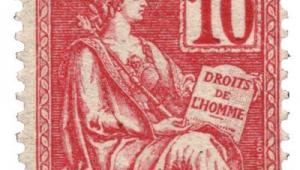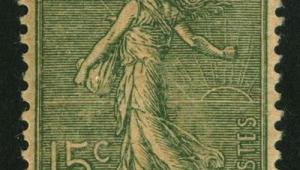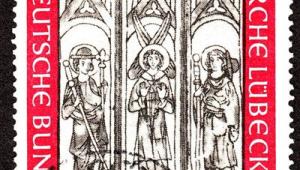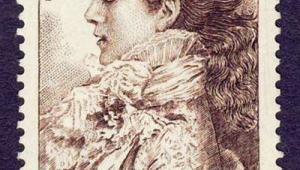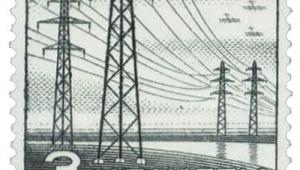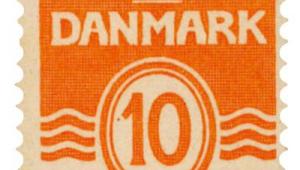The Italian Machin
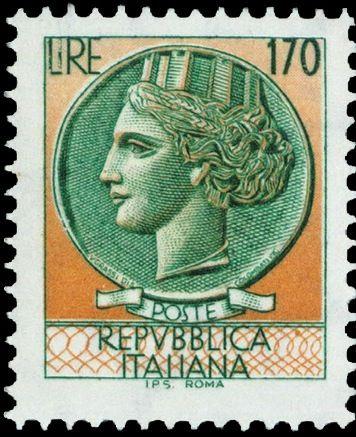
Italian definitives in the first half of the 20th century were not known for their consistency of design.
The first three decades had seen various values added piecemeal to at least three different blueprints, and even the Imperiale and Democratica series of the 1930s and 1940s still comprised numerous different types.
Things had improved with the Provincial Occupations (or Italy at Work) series in 1950, which was recognisable as a cohesive collection rather than a motley range of designs, even if its large format made it awkward for everyday use.
It was not until 1953, however, that things really settled down, as a definitive series was finally introduced which consisted of just one design, in a more convenient format.
The chosen image was an allegory of Italy as a crowned lady. She is known as Siracusana, after the 4th-century coin on which the design was based.
The stamp was designed by Vittorio Grassi, engraved by Mario Colombati, and initially printed in either photogravure, for the lower values, or recess, for the higher values.
The series started off with postal stationery only, but this was followed by the first adhesive stamps from June 6, 1953, each printed in one colour and ranging from 5-lira to 80-lira.
Initially these were intended to co-exist in tandem with the Provincial Occupations set, for those who preferred their smaller format.
But the Siracusana series proved so popular that it survived its predecessor, and even a subsequent Michelangelo set, and would remain in use for decades.
Because of its iconic design and longevity, it is sometimes described as ‘the Italian Machin’.
The series can be divided into two sub-sets, with the cut-off point being 1968, when fluorescent paper was introduced to allow for mechanised sorting.
To help the sorting machine pick up the signal better, a larger white border was needed, so at the same time all current values were reprinted with a slightly smaller design which was retained for subsequent issues.
Also from this issue, many of the higher values, above 100l, began to appear in two colours.
Another major development during the lifetime of the Siracusana set was the reintroduction of stamp booklets. These had first been produced in the early 1900s but had been phased out, given that stamps were widely available in newsagents and out-of-hours sale was not considered a key service. In 1956, however, vending machines were brought in, and booklets enjoyed a revival.
Two different types of 100-lira booklets were dispensed, comprising either 10 x 10l or 4 x 25l values. Panes were taken from regular sheets, and are therefore not readily distinguishable once removed from their booklets.
The stamps were initially produced on paper with a Winged Wheel watermark, but from 1955 a Multiple Stars watermark was used. Specialists have a number of varieties to collect, and for those with money to burn there are also some very rare perforation varieties to hunt down.
A popular but time-consuming challenge is to hunt down single-franking covers with the appropriate value for each particular postal rate. The 29 different values issued through the decades correspond to about 175 basic rates to collect, even before you enter into the realms of the more obscure rates!
An interesting sideline is the nine Siracusana values that were overprinted ‘AMG-FTT’ for use by the Allied Military Government for the Free Territory of Trieste in 1953-54.
New values were still being added to the Siracusana range as late as 1977, when two values were printed in a combination of recess and litho.
Even after it was superseded by the Castles definitives in 1980, the series remained valid for use until 1988.
